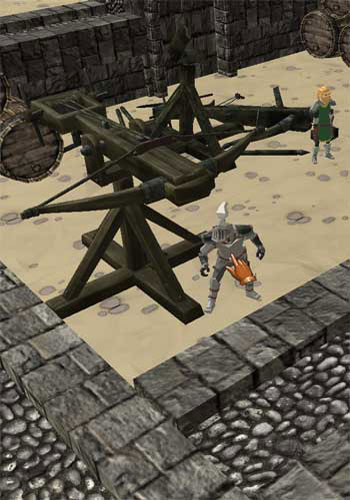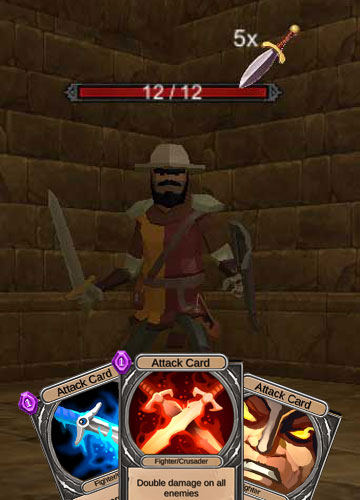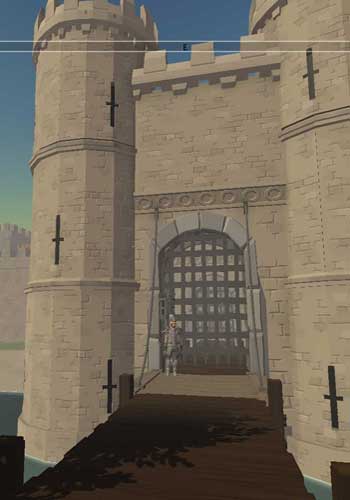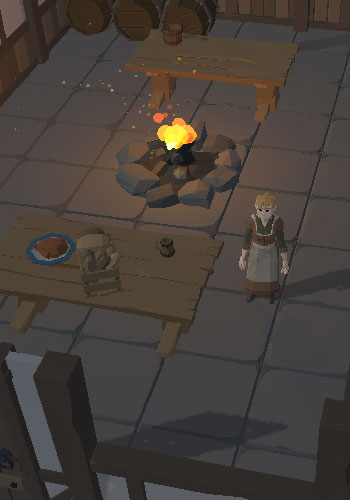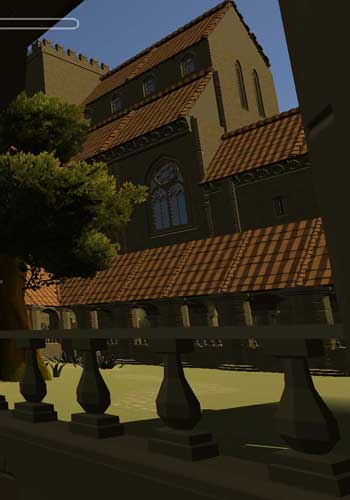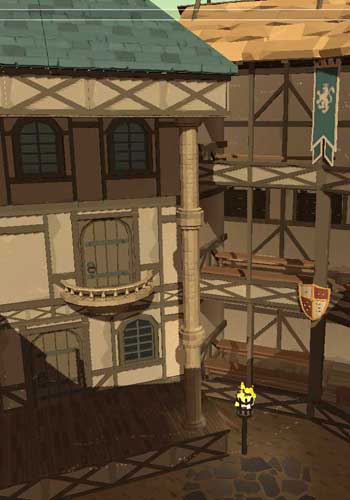
Pages in this section
- Introduction and simple keep example
- Tower of London plans and 3d model
- Middleham Castle floor plans
- Hedingham Castle floor plans
- Dover Castle floor plans
- Timeline of Square Keep construction
- Explore 3d reconstructions
Medieval Castles
Types of castles
- Early Fortifications
- Castles of William the Conqueror
- Earthwork castles
- Motte and bailey castles
- Square keeps
- Shell-Keeps
- Polygonal Keeps
- Concentric Castles
Other details

The White Tower
 he keep
at the Tower of London is about 90 feet high and the thickness of the walls
varies from 15 feet in the
basement to around 10 feet at the top. A central cross wall runs the complete
height of keep providing extra strength and a
means of supporting the wooden flooring. Originally the keep was painted with
whitewash leading to its name. The keep has three
square corner towers and one circular corner tower to the north east in which
the main spiral staircase is situated. The south
east of the building is rounded providing the circular shape usually found at
the east and of a church and in which is located
the castle's chapel.
he keep
at the Tower of London is about 90 feet high and the thickness of the walls
varies from 15 feet in the
basement to around 10 feet at the top. A central cross wall runs the complete
height of keep providing extra strength and a
means of supporting the wooden flooring. Originally the keep was painted with
whitewash leading to its name. The keep has three
square corner towers and one circular corner tower to the north east in which
the main spiral staircase is situated. The south
east of the building is rounded providing the circular shape usually found at
the east and of a church and in which is located
the castle's chapel.
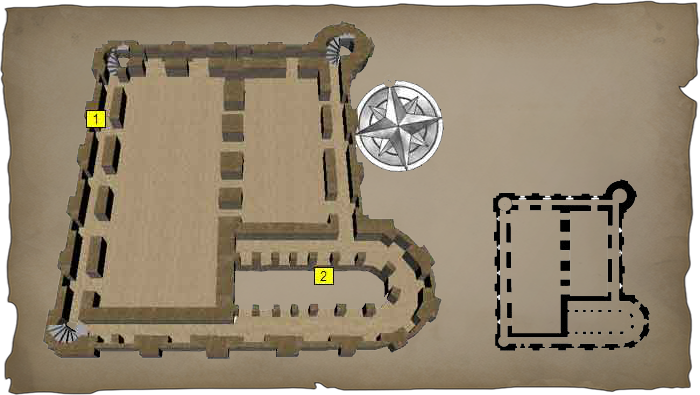


The basement of the keep is divided into three rooms. The floor is under ground level to the north but is above ground level to the south because the ground that the keep sits on slopes towards the river Thames. The basement was originally only reached by a spiral staircase in the north east round tower. The basement of the keep held the instruments of torture which were used to extract information from prisoners.

Timeline
1078
...
Work starts on the White Tower
Gundulf began work on the White Tower, the Tower of London. ¹
1091
October
Violent storm hits London
London was hit by a terrible storm, possibly a tornado. Damage was done to the Tower of London, the old wooden London Bridge and many churches and buildings. Around the country storms destroyed steeples of churches, such as at Old Sarum.
1141
June
Matilda enters London
Matilda and her supporters entered London for her coronation. Her supporters included David I, king of the Scots. Geoffrey de Mandeville who controlled the Tower of London, abandoned his king as he saw Matilda had the upper hand. He joined her side and offered her the Tower of London. He did this to ensure he kept the Earldom of Essex which made him one of the most powerful barons of the time.
1143
September
Mandeville is arrested
King Stephen arrested Geoffrey de Mandeville at a meeting of the Royal Court. Mandeville had tried Stephen's patience with his disloyalty and the king did not want the Tower of London (which Mandeville controlled) fall into the hands of Matilda. Mandevilles castles and title of Earl of Essex were taken from him, and he became an outlaw. ¹
1153
...
Richard de Lucy becomes Constable of the Tower
Richard de Lucy was appointed the title of Constable at the Tower of London, an extremely important position, by King Stephen.
1189
(to 1199)
Building work commences at the Tower
While Richard I was away on Crusade, William Longchamp, the Bishop of Ely and Chancellor ordered the enlargement of the bailey surrounding the keep Tower in London. A new ditch and bank were constructed with a new section of curtain wall.
1191
October 6
Tower of London siege
Bishop William Longchamp held the Tower of London against Prince John's supporters for only three days. The Bishop surrendered the Tower and escaped to continue his support for King Richard. ¹
1220
(to 1240)
Henry III's improvements at the Tower
King Henry III made large alterations to the Tower of London including new curtain walls, an improved water filled ditch, and a water gate, so the King could enter the castle directly from the Thames. ¹
1235
...
Leopards at the Tower
The Tower of London was home to a menagerie of exotic animals given to the monarchs of England as gifts. In this year three leopards were given to King Henry III. ¹
1261
May
Henry back in control
Having obtained a papal bull (a formal proclamation issued by the pope) to absolve himself from the Provision of Oxford, King Henry III hired an army of 300 French knights as bodyguards and took up position in the Tower of London. His objective was to regain the absolute power that the Barons had taken away.
1263
...
Edward raids the Temple in London
On the pretence of removing his mother's jewels, Edward (I) entered the Knights Templar's Temple in London and ransacked the treasury, taking the proceeds to the Tower of London.
1275
(to 1285)
Major rebuilding work at the Tower of London
King Edward I spent large sums of money improving the fortifications at the Tower of London. A new moat was dug and a curtain wall was built around it. The land between the Tower and the river was levelled and new apartments were built on the shore. Edward had a complex of gates added which meant it was extremely difficult to attack the castle through the main land entrance.
1281
...
Beauchamp Tower at Tower of London built
King Edward I was responsible for the construction of the Beauchamp Tower at the Tower of London on the western side of the curtain wall. It got its name later on in 1397 when Thomas Beauchamp was imprisoned there by Richard II. The three storey tower was large enough to hold not only the captive, but members of his household as well. It has been used to hold other important prisoners since.
1285
May
Welsh relics paraded
Several Welsh holy relics were paraded through London in a procession from the Tower of London to Westminster.
1296
July
Balliol: Surrenders at Stracathro, Edward takes the Stone of Scone
The English had taken many castles and in July 1296 Balliol surrendered to King Edward I and was imprisoned in the Tower of London. Edward advanced to Elgin and on his return to England took the Stone of Scone. ¹
1299
July
Balliol released from the Tower
King Edward released John Balliol from the Tower of London and placed him into the custody of Pope Boniface to be held in papal residence. This arrangement ended a few years later and Balliol retired to his family's ancestral home in Picardy.
1326
September 24
Isabella and Mortimer land to take the throne
Isabella, the wife of Edward II and her supporters including Mortimer landed at Orwell in Suffolk. Their aim was to remove Edward II from his throne and place Prince Edward there as the new king. Isabella had no problem in raising an army from those opposed to the King and they advanced on London. Although Edward was in the Tower of London the rest of London was against him and he decided to leave the city and head west with his supporters including the Despensers and the Earl of Winchester. The Tower of London fell to the mob of Isabella's supporters.
1340
November
Edward dismisses his Chancellor
Edward travelled back to England and came ashore at the Tower of London. He was horrified to find the castle unguarded. His anger did not stop with those in charge at the Tower. Edward sacked many of his advisors including the Chancellor, John Stratford, the Archbishop of Canterbury. ¹
1348
(to 1355)
Water gate built at Tower of London
At the Tower of London King Edward III had a water gate constructed at the base of the Cradle Tower. This allowed access to royal apartments directly from the river.
1351
...
Eastminster Abbey founded
King Edward III founded a new Cistercian abbey near the Tower of London. Monks from Beaulieu Abbey populated the new abbey. ¹
1413
Autumn
Sir John Oldcastle arrested
As the leader of the Lollards, the friend of the King was arrested and sent to the Tower of London.
1413
November
Talbot sent to the Tower
Henry V had John Talbot arrested over a land dispute that must have escallated out of control. Talbot was sent to the Tower of London.
1440
...
Collapse of the London Postern Gate
One of the several gates built around London was the Postern Gate at the Tower of London. Around this time the gate collapsed into the moat and it was never rebuilt.
1445
May 30
Margaret of Anjou crowned
After a triumphant entrance to London a few days earlier Margaret stayed at the Tower of London for a few days before going to Westminster Abbey where she was crowned. ¹
1450
Summer
Matthew Gough made Captain of the Tower
On his return from Normandy Matthew Gough was made Captain of the Tower of London. Gough was killed in the fighting with Jack Cade and the rebels on London Bridge soon afterwards. ¹
1451
...
Support for Richard in Parliament
Thomas Young, the member of Parliament for Bristol stood up and declared that Richard, Duke of York's claim to the throne should be considered. Thomas Young was quickly arrested and locked up in the Tower of London.
1453
November
Somerset sent to the Tower
With support of the other barons Richard, Duke of York won over the unpopular Edmund Beaufort, the duke of Somerset. He had only kept his position of power with the support of the King and without that support all was lost. Somerset was arrested and sent to the Tower of London.
1460
July 19
Garrison at Tower of London surrenders
The Lancastrian garrison holding the Tower of London surrendered. Lord Scrope tried to escape but was seen and killed by the river, but most of the garrison escaped. ¹
1465
Summer
Henry VI captured
Henry had been helped by Lancastrian supporters in the north but was finally captured at Waddington Hall. He was taken to London and put in the Tower.
1470
October 6
Henry restored as King
The Earl of Warwick and Clarence entered London. King Henry VI was released from the Tower of London. Henry was crowned King of England for the second time.
1471
April 11
London opens its gates to Edward and the Yorkists
The Earl of Warwick was in Coventry and apparently unwilling to confront Edward, so Edward and Richard marched south to London. London was under the control of Warwick's brother, George Neville the Archbishop of York, but the Londoners were Yorkists and they welcomed the return of their true king. Once inside the city Edward had the Archbishop arrested and along with King Henry VI put in the Tower of London.
1478
February 18
Clarence executed
The Duke of Clarence was privately put to death within the walls of the Tower of London. ¹
1483
April 30
Richard captures the young prince
Richard of Gloucester, assisted by the Duke of Buckingham rode to Stony Stratford where they met with the young Prince Edward under the pretence of offering their condolences for the death of his father. Instead, they captured Edward and took him directly to London and safe keeping in the Tower. Anthony Woodville, Earl Rivers was arrested and imprisoned at Sherriff Hutton Castle, near York. ¹
1483
July
Murder of Princes in the Tower
At some point the young King Edward V and his brother Richard disappeared. Whether they were murdered in the Tower of London and by whom is not known, but they were not seen of again. Later, in 1491, a man called Perkin Warbeck appeared in Ireland and claims were made that he was really Richard of Shrewsbury, Duke of York, one of the princes in the Tower.
1498
June
Warbeck escapes
Perkin Warbeck was able to escape from captivity but was recaptured at Shene, Richmond. He gave himself up on condition of being spared and confessing that he was an imposter. After a public disgrace he was taken to the Tower of London.
1499
Summer
Escape plot
Plans were formed to free the Earl of Warwick from the Tower of London and put him on the throne of England. The plans could have also included or been assisted by Perkin Warbeck. The plot was uncovered and both Warbeck and Warwick were accused of treason.
1499
November
Execution of Perkin Warbeck and Edward, Earl of Warwick
Both Perkin Warbeck and Edward, Earl of Warwick were executed at the Tower of London, found guilty of treason. Edward had been held captive in the Tower since the age of ten when Henry VII became King of England after defeating Edward's uncle Richard III at the battle of Bosworth. Perkin Warbeck had claimned to be one of the two Princes in the Tower who had mysteriously disappeared during the reign of Richard III.
1501
...
Tournament at the Tower of London
King Henry VII held a tournament at the Tower of London. ¹
1510
...
Execution of Edmund Dudley
Edmund Dudley was a key administrator during the reign of King Henry VII. He was able to amass a large amount of money while undertaking financial transactions for the King. After the death of Henry VII, Dudley and his co-conspirator Sir Richard Empson were arrested and found guilty of treason. They were executed for their crimes. While awaiting trial, Dudley was held at the Tower of London.
1512
...
Fire at the Tower of London
A fire at the Tower of London damages St. Peter's chapel within the castle grounds. ¹
1536
May 19
Execution of Anne Boleyn
Anne Boleyn, the second wife of King Henry VIII, was executed for treason and adultery at the Tower of London.
1542
February 13
Catherine Howard executed
Catherine Howard was executed on Tower Green within the Tower of London. She had been found guilty of adultery and therefore treason and sentenced to death.
1542
November 24
Battle of Solway Moss
The battle at Solway Moss ended in a terrible defeat for the Scottish when they were overrun by a much smaller force of English troops led by Sir Thomas Wharton. Several high-worth Scottish prisoners were taken and transported to the Tower of London for future ransom. The shock of the defeat is supposed to have been so great for the Scottish king, James V, that he died just a few weeks later.
1549
March
Execution of Lord Seymour
Thomas Seymour, the Protector's brother, had married the late king's widow Catherine Parr. Suspicion fell on Thomas after the untimely death of Catherine in late 1548 and it was suspected that he wanted to marry Elizabeth, King Henry VIII's daughter. He may have also tried to bribe the young king Edward VI into giving him more power. Thomas was arrested, charged with treason and sent to the Tower of London. Without much of a trial he was exectuted.
1552
January 22
Execution of the Duke of Somerset
Even after after Somerset's fall from grace he was still a threat and was hated by John Dudley, the Earl of Warwick. On an exaggerated charge of treason Somerset was arrested and taken to the Tower of London. Whether he was guitly of what he was accused of or not, Somerset was executed.
1553
August 3
Mary Tudor arrives in London
Mary Tudor arrived at London to a huge welcome. Entering through Aldgate she was met by Elizabeth, Anne of Cleves and many others. Mary quickly ordered the release of her supporters that had been locked up at the Tower of London. The Duke of Northumberland and his supporters were placed in the Tower of London to await trial and execution.
1553
August 22
Dudley executed on Tower Hill
John Dudley was executed along with others accused of treason.
1553
October 4
Archbishop of York arrested
The archbishop of York was arrested on charges of treason and sent to the Tower. His homes were raided and his riches were stolen.
1554
April 11
Wyatt executed
Sir Thomas Wyatt was executed at Tower Hill for leading the rebellion against Queen Mary. Wyatt denied that Elizabeth had been involved in any part of rebellion. ¹
1554
April 23
Princess Elizabeth in the Tower
Princess Elizabeth was imprisoned in the Tower of London. ¹
1558
November 24
Elizabeth enters London
Several days after the death of her sister Mary, Elizabeth entered London. She made her way through the crowds of loyal Londoners to the Tower where she stayed for a few days while she sorted out her affairs and selected her advisres.
1583
November
Throckmorton Plot
Francis Throckmorton was found guilty of carrying messages with details of an assassination attempt to murder Queen Elizabeth, an invasion by Spain and the freeing of Mary Stuart from captivity. Along with the Earl of Northumberland, Throckmorton was put in the Tower of London before being executed for treason. Before his death, Throckmorton revealed that Queen Mary knew about the plot. ¹
1603
November
Sir Walter Raleigh imprisoned
Sir Walter Raleigh was accused of treason as part of a plot to remove King James I from the English throne and replace him with Arbella Stuart. Lord Cobham was the supposed ringleader and was planning to use Spanish money to put the plans into reality. Once the plot was discovered, both Cobham and Raleigh were arrested and found guilty. They were both transferred to the Tower of London.
1616
...
Raleigh released from the Tower
After many years imprisoned in the Tower of London, Sir Walter Raleigh was pardoned by the King and released. During this time locked up in the Tower of London he had keep abreast of events and had been working on a book entitled 'The History of the World'.
Test Your Knowledge
Explore the White Tower at the Tower of London

Page Navigation
Virtual Locations Map
Click icons to explore the reconstructions

More castle pages
Pages in this section
Types of castles

